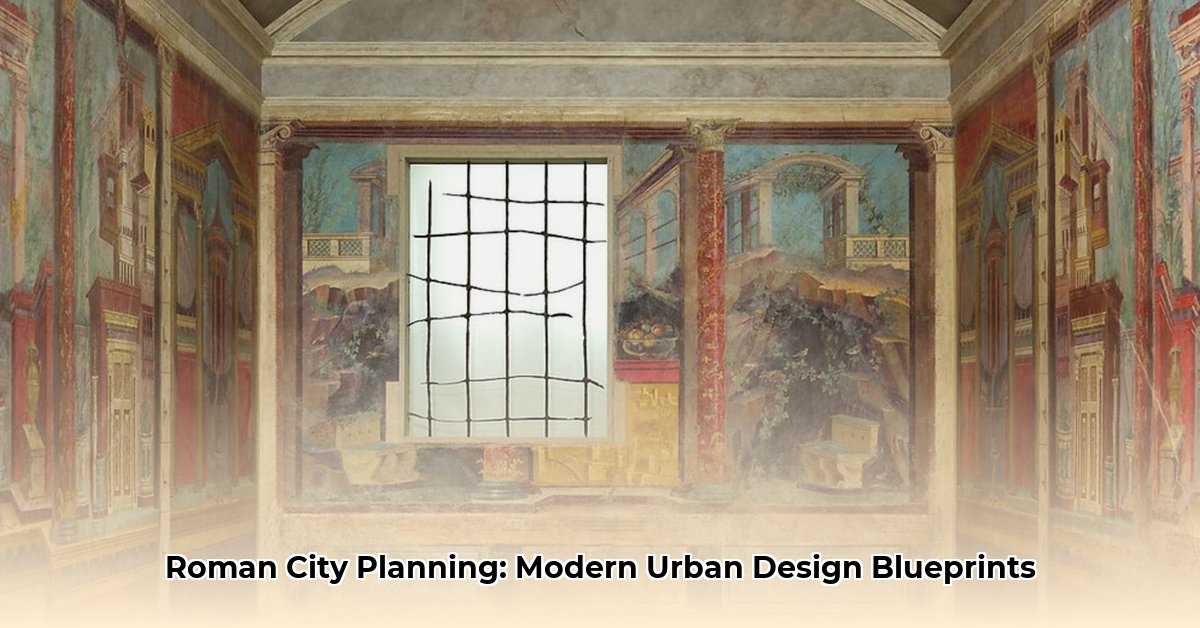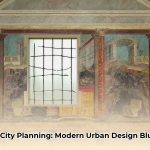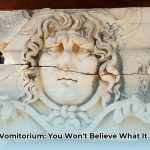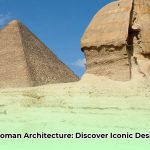Ever wondered how ancient Rome built cities that still influence us today? It wasn’t just luck or random development; they engineered complex urban environments with profound foresight. These old-school techniques hold surprisingly relevant lessons for navigating today’s intricate urban challenges. We’re talking about the systematic brilliance behind their street layouts, their revolutionary water systems, and how they crafted public spaces that fostered vibrant community life. Beyond dusty history lessons, this exploration dives into practical strategies gleaned from Roman ingenuity to build more efficient, resilient, and livable cities. Consider this an instruction manual for unlocking ancient secrets to shape a better urban tomorrow, one carefully planned block at a time. Did you know you can explore Roman city names for inspiration?
The Enduring Blueprint: Roman Principles for Modern Cities
Do you sometimes feel a disconnect in the design of contemporary cities? Perhaps the answers lie within the meticulously crafted ancient Roman city planning. Far more than mere collections of structures, these urban centers were thoughtfully constructed ecosystems, engineered to promote both functionality and a profound sense of community. Could studying these historical blueprints provide pivotal solutions for our current urban dilemmas? Indeed, the Romans offer invaluable insights into resilience, efficiency, and timeless design.
The Grid: Order, Accessibility, and Rapid Development
Imagine a city designed with unparalleled precision, where every street served a strategic purpose. This was the hallmark of the Roman grid system, consistently anchored by the cardo maximus (primary north-south axis) and decumanus maximus (primary east-west axis). These main arteries, typically 9 meters wide, were not just roads; they were vital conduits for commerce, military movement, and daily life, often converging at the forum, the city’s civic heart.
This remarkably simple, yet highly effective, design ensured smooth movement, easy orientation, and systematic urban expansion. Early examples like Norba, a 4th-century BCE city, showcased perfect orthogonality despite challenging terrain. Alba Fucens (founded 303 BCE) and Cosa (founded 273 BCE) further demonstrated that regular grid patterns could be applied to mountainous areas, contradicting earlier theories. Cities like Ariminum (Rimini, 268 BCE) featured blocks of 74 by 110 meters, while Placentia (218 BCE, reconstructed 190 BCE) was patterned on square blocks 80 meters on a side. Later Imperial cities such as Emona (34 BCE), Autun, and Timgad often featured even wider blocks, sometimes exceeding 100 meters.
While uniform square or rectangular blocks were common (e.g., Sena Gallica with 50-meter square blocks, Parma with 45 by 55 meters), Roman planners also adapted the grid. Some cities, like Turin and Aosta, adopted a military camp-inspired layout where the main axes shifted from the center, featuring a via principalis and via quintana. Others, such as Roman Carthage (Augustan era), utilized scamna—very long rectangular blocks (1 by 4 actus, or 35.28 by 141.12 meters)—arranged parallel to main axes, differing from the more common strigae where the long side was perpendicular.
How can modern urban planners harness the power of such adaptable grid layouts to improve traffic flow, manage rapid urban growth, and make our cities more intuitively navigable in an expanding world? The Roman model emphasizes clear, consistent organizational principles.
Infrastructure: Pillars of Public Health and Urban Resilience
The Romans were undisputed masters of infrastructure, particularly concerning water and sanitation—a commitment deeply tied to public health. Their ingenious aqueducts, such as the Aqua Appia and the awe-inspiring Pont du Gard, were architectural marvels, delivering fresh, clean water from distant sources to every corner of their burgeoning cities. These elaborate networks, sometimes stretching for hundreds of kilometers with precise gradients, demonstrate a profound understanding of hydraulics and long-term planning.
The Cloaca Maxima, Rome’s groundbreaking early sewer system, alongside extensive public baths like the Baths of Caracalla, were vital for maintaining urban hygiene and preventing disease outbreaks. Romans understood a fundamental principle: a city’s quality of life and public well-being are inextricably linked to the robustness of its basic infrastructure. These integrated systems fostered cleanliness, facilitated social interaction, and supported the burgeoning population densities of their urban centers. This raises a critical question for modern cities: How can we design more durable, integrated, and eco-friendly water management and sanitation systems that echo the Roman commitment to comprehensive public well-being and meet the demands of growing populations and climate change?
The Forum: Community’s Heartbeat, Civic Engine
The forum was far more than just a marketplace; it was the beating heart of the Roman city – a vibrant social, political, judicial, and commercial nexus. Strategically placed, often at the intersection of the cardo maximus and decumanus maximus (as seen in cities like Timgad), it was a focal point of Roman life. Surrounded by impressive basilicas (administrative buildings), sacred temples, bustling shops, and civic offices, it symbolized the unity, governance, and interconnectedness of Roman society.
The forum hosted legal proceedings, public speeches, religious ceremonies, and daily markets, making it a dynamic hub of activity. Its central location ensured accessibility to all citizens, emphasizing the communal spirit of Roman urban life. Some historians consider the forum’s integrated design and central role vital to the long-term success and cohesion of Roman cities. How can we design multi-purpose public spaces in our sprawling modern metropolises that foster a profound sense of community, encourage genuine interaction among residents, and serve as true civic engines? Prioritizing walkability, accessibility, and the intentional placement of essential amenities in today’s urban design could be a key step towards recreating this essential Roman urban element.
Mastering Water: The Roman Aqueducts’ Enduring Legacy
The Roman aqueduct system exemplifies their unparalleled engineering prowess and practical approach to urban challenges. Imagine the monumental task of supplying a bustling city with fresh water using only the tools and knowledge available two millennia ago. The Romans solved this problem with aqueducts—sophisticated systems that harnessed gravity, innovative construction techniques, and meticulous planning. Their extensive networks, which in some cases exceeded the water supply capabilities of many modern cities, demonstrate a deep understanding of hydraulics, long-term resource management, and public health.
Building the Flow: A Step-by-Step Look
The construction of Roman aqueducts was a testament to organized labor, precise engineering, and material innovation. It began with a foundational understanding: maintaining a consistent downhill slope to carry water from a distant source to the urban centers. Think of it as a meticulously engineered, massive water slide for an entire population!
- Meticulous Surveying and Planning: Roman engineers meticulously surveyed vast terrains using advanced instruments for their time, such as the groma (for establishing straight lines and right angles), the dioptra (a sighting tube for precise leveling), and the chorobates (a long, straight wooden beam with plumb lines for determining horizontal levels). This precise surveying was critical to identifying suitable water sources and plotting the ideal, consistent gradient for continuous water flow. Accuracy was paramount, as even slight errors could compromise the entire system.
- Channel Construction (Specus): The water channel, or specus, was typically built underground to protect the water from contamination, extreme temperatures, and vandalism. This involved digging extensive trenches and lining them with waterproof materials like opus signinum (a concrete made from crushed tiles or bricks). Where above-ground sections were necessary, they were often covered to maintain water purity.
- Bridge and Tunnel Construction: When natural obstacles such as valleys or hills obstructed the aqueduct’s path, Roman engineers employed astounding solutions. They constructed monumental bridges, like the iconic Pont du Gard in France, to span valleys, or excavated long tunnels through mountainsides, requiring careful planning for ventilation and structural integrity. These structures were not only functional but also architectural statements.
- Material Selection and Innovation: The strength and longevity of Roman infrastructure derived significantly from their innovative use of concrete, known as opus caementicium. This revolutionary material, distinct from modern concrete, incorporated volcanic ash (pozzolana), which reacted with lime and water to create an incredibly strong, durable, and even self-healing binder. This allowed for the rapid construction of massive, resilient structures that have endured for centuries.
- Water Distribution (Castella Divisonia): Once the water reached the city’s perimeter, it flowed into large distribution tanks or reservoirs (castella divisonia). From these central points, the water was then channeled through a network of lead or ceramic pipes to supply public fountains (nymphaea), grand public baths, and elite private residences. While highly efficient for its time, the widespread use of lead pipes has been a subject of historical debate regarding potential health impacts, though mineral buildup may have mitigated direct lead exposure in some instances.
The Roman Material Advantage and Labor Force
The enduring strength of Roman infrastructure stemmed largely from their innovative use of opus caementicium. Its unique composition provided unparalleled structural longevity, allowing structures like the Pantheon’s unreinforced concrete dome to stand for nearly two millennia. However, it is also crucial to acknowledge the colossal labor force behind these grand projects. The Romans had access to a vast and organized workforce, often comprised of enslaved people, legionaries, and skilled artisans. This immense human resource undeniably contributed to the extraordinary scale, speed, and ambition of their construction endeavors. Recognizing this ethical dimension is essential for a complete understanding of how these monumental aqueducts and other structures reached their impressive size and prevalence. This highlights the complex interplay of engineering ingenuity, societal organization, and human cost.
Modern Echoes: Adapting Ancient Water Wisdom
Can we learn from the Romans today, particularly in the face of global water scarcity, aging infrastructure, and climate change? Absolutely. Their commitment to efficient design, robust construction, consistent maintenance (aqueducts were regularly inspected and cleaned, sometimes every one to five years), and sound legal frameworks for water distribution offers immensely valuable lessons. What if modern cities more rigorously replicated their use of gravity-fed systems in appropriate topographies to significantly reduce energy consumption in water distribution?
Here’s how Roman principles can be adapted with profound benefits:
| Roman Principle | Modern Application | Benefit |
|---|---|---|
| Gravity-fed Systems | Designing water systems in hilly or naturally sloped areas to minimize reliance on energy-intensive pumps, integrating smart sensors for real-time flow monitoring. | Achieves significantly lower operating costs, dramatically reduces the carbon footprint of water distribution, and enhances system resilience during power outages. |
| Durable & Sustainable Concrete | Developing advanced, sustainable concrete alternatives or adopting modern interpretations of Roman geopolymer concrete formulations to create exceptionally long-lasting infrastructure. This includes exploring self-healing concrete and low-carbon cement. | Results in drastically reduced maintenance requirements, significantly lower lifecycle costs for infrastructure, and a minimized environmental impact due to less frequent material replacement and resource extraction. |
| Meticulous Surveying & Planning | Utilizing cutting-edge surveying technologies such as LiDAR (Light Detection and Ranging), drone mapping, and high-precision GPS for ultra-accurate infrastructure planning. This includes detailed hydrological modeling and geological assessments. | Minimizes errors during construction, optimizes resource allocation by precisely identifying ideal routes and material needs, and significantly reduces the environmental impact by avoiding unnecessary disruption to ecosystems. |
| Integrated Public Water Spaces | Thoughtfully incorporating green spaces, public fountains, and modern community bathhouses or aquatic centers into urban designs. This mirrors the Roman approach of water distribution to public fountains and baths, which inherently fostered community access and interaction. | Elevates the overall quality of urban life, significantly improves public mental and physical health by providing accessible recreational and social amenities, and can even increase property values in surrounding areas, creating highly desirable neighborhoods. |
| Comprehensive Waste Management | Upgrading aging sewer systems with smart management technologies, implementing comprehensive wastewater treatment plants that can recycle water for non-potable uses, and integrating robust stormwater management solutions that mimic natural drainage. This also includes promoting city-wide composting and waste-to-energy initiatives. | Ensures superior public health outcomes by preventing pollution and disease, enhances environmental sustainability through resource recovery and reduced landfill waste, and builds urban resilience against extreme weather events by effectively managing water runoff. |
This ancient Roman water management approach, focusing on efficient infrastructure, regular maintenance, and integrated legal frameworks for resource allocation, offers crucial, timeless lessons for today’s cities grappling with issues like water scarcity, climate change, and equitable access to essential services.
From Ancient Rome to Future Cities: Actionable Strategies
The enduring legacy of ancient Roman city planning provides a treasure trove of actionable insights for tackling contemporary urban challenges with foresight and ingenuity. The Romans understood that successful urban environments require integrated solutions, where transportation networks, water management systems, and vibrant public spaces work in interconnected harmony. Their emphasis on long-term planning, durability, and practical adaptability is indispensable for any modern city aiming for resilience and sustainable growth.
Reimagining Our Public Realms Through Roman Lenses
The Romans inherently understood that roads were not just utilitarian pathways; they were vital arteries connecting people, boosting trade, enabling military movements, and projecting imperial power. What if we approached the design and function of our modern streets with a similar multi-faceted vision?
- Actionable Step 1: Prioritize Complete Street Designs. Implement urban planning policies that mandate the integration of safe pedestrian walkways, dedicated bike lanes, green spaces, and effective stormwater management systems alongside roadways. This transforms mere transit corridors into vibrant, multi-functional public conduits that enhance safety and livability.
- Actionable Step 2: Utilize Durable, Sustainable Materials. Drawing direct inspiration from the longevity of Roman concrete (opus caementicium), invest in and develop cutting-edge, long-lasting infrastructure materials. Prioritize sustainable sourcing, recycled content, and materials that require less frequent replacement, thereby significantly reducing environmental impact and long-term maintenance costs.
- Actionable Step 3: Envision Streets as Dynamic Public Hubs. Actively foster policies that encourage and enable streets to host diverse public activities beyond pure transit—such as farmers’ markets, outdoor festivals, street art installations, or simply well-designed spaces for casual community gathering. This echoes the multi-functional civic and commercial role of ancient Roman thoroughfares.
Can your city’s streets transform into vibrant public hubs, much like the dynamic Roman roads that defined their urban experience?
Water scarcity is an accelerating global crisis, exacerbating inequalities and threatening urban sustainability. The Romans were unparalleled masters of large-scale, coordinated water management. How can we learn from their systems to ensure equitable water access for all?
- Actionable Step 4: Invest in Resilient and Efficient Water Distribution Systems. Prioritize the urgent upgrade of aging water infrastructure to minimize leaks, reduce waste, and improve pressure regulation. Implement smart monitoring technologies like IoT sensors to detect issues in real-time and optimize water flow, mirroring Roman dedication to system integrity.
- Actionable Step 5: Implement Comprehensive Rainwater Harvesting and Greywater Recycling Programs. Develop widespread urban programs and incentives for both public and private entities to capture rainwater for non-potable uses and recycle greywater from sinks and showers for irrigation or toilet flushing. These strategies can significantly reduce reliance on strained fresh water sources and dramatically improve urban water resilience.
- Actionable Step 6: Design Modern, Multi-Purpose Public Water Features. Reimagine public fountains, splash pads, and community pools not just as recreational elements but as integral components of urban water management. These features can promote water conservation awareness, offer cooling refuges in increasingly hot urban environments, and serve as accessible community gathering points, reflecting the Roman integration of water into public life.
What if every city could ensure a reliable, clean, and publicly accessible water source, much like the Roman aqueducts provided for centuries?
The Cloaca Maxima revolutionized urban sanitation, setting a precedent for public health. Effective waste management remains absolutely critical for preventing disease, protecting the environment, and maintaining urban livability.
- Actionable Step 7: Systematically Upgrade Aging Sewer Systems. Implement comprehensive plans to modernize and expand wastewater treatment facilities and piping networks. This is crucial for preventing overflows, mitigating pollution of natural waterways, and ensuring robust public health outcomes, especially in densely populated areas.
- Actionable Step 8: Promote Circular Economy Principles Through Waste Reduction and Composting. Launch aggressive public awareness campaigns and infrastructure investments to encourage residential and commercial composting. Develop advanced material recovery facilities to sort and recycle waste effectively, minimizing landfill dependency and maximizing resource recovery from urban waste streams.
- Actionable Step 9: Integrate Green Infrastructure for Stormwater Management. Utilize nature-based solutions such as bioswales (landscaped depressions designed to filter pollutants from surface runoff), permeable pavements, green roofs, and urban wetlands. These systems naturally filter stormwater runoff, reduce flood risks, replenish groundwater, and beautify urban landscapes, mirroring historical reliance on natural hydrological processes.
Could modern advancements in sanitation bring about the same transformative level of public health and hygiene that the Cloaca Maxima provided for ancient Rome, but with advanced sustainability?
The Roman Forum and the Colosseum were more than just impressive buildings; they were sophisticated centers of social, political, and cultural life. They fostered a profound sense of shared identity and civic participation. How can we meaningfully recreate that powerful sense of community and belonging in today’s often fragmented urban environments?
- Actionable Step 10: Create Human-Scale, Pedestrian-Friendly Plazas and Parks. Design inviting public spaces that are easily accessible, offer comfortable seating, shade, and greenery, and are thoughtfully integrated into surrounding neighborhoods. Such spaces naturally encourage social interaction, active lifestyles, and spontaneous community engagement.
- Actionable Step 11: Invest in Public Art and Champion Diverse Cultural Events. Support local artists and cultural organizations to integrate public art installations throughout urban spaces. Consistently host a diverse range of community events—from farmers’ markets and outdoor concerts to civic forums and festivals—to foster civic pride, celebrate cultural diversity, and create vibrant urban experiences.
- Actionable Step 12: Design Flexible, Adaptable Public Spaces. Create urban areas that can seamlessly transform for different uses throughout the day, week, or season. This might include modular seating, movable public art, and infrastructure that supports temporary structures for markets or performances, maximizing their utility and community benefit across various needs.
What if every city had vibrant, inclusive public spaces that fostered a profound sense of belonging and civic pride, echoing the powerful social magnet of the Roman Forum?
Integrating Design and Governance for Lasting Impact
It’s not enough to merely construct grand projects; the Romans understood that consistent maintenance and effective governance were equally, if not more, important for long-term urban resilience.
- Actionable Step 13: Establish Robust, Dedicated Funding Mechanisms for Infrastructure Maintenance. Implement long-term financial commitments and allocate specific, protected budgets for the ongoing inspection, repair, and upgrade of urban systems. This consistent financial investment ensures the longevity and continuous functionality of critical infrastructure, preventing costly future failures.
- Actionable Step 14: Foster Deep, Cross-Sector Collaboration in Urban Development. Actively encourage robust partnerships and open communication channels between government agencies (at all levels),










